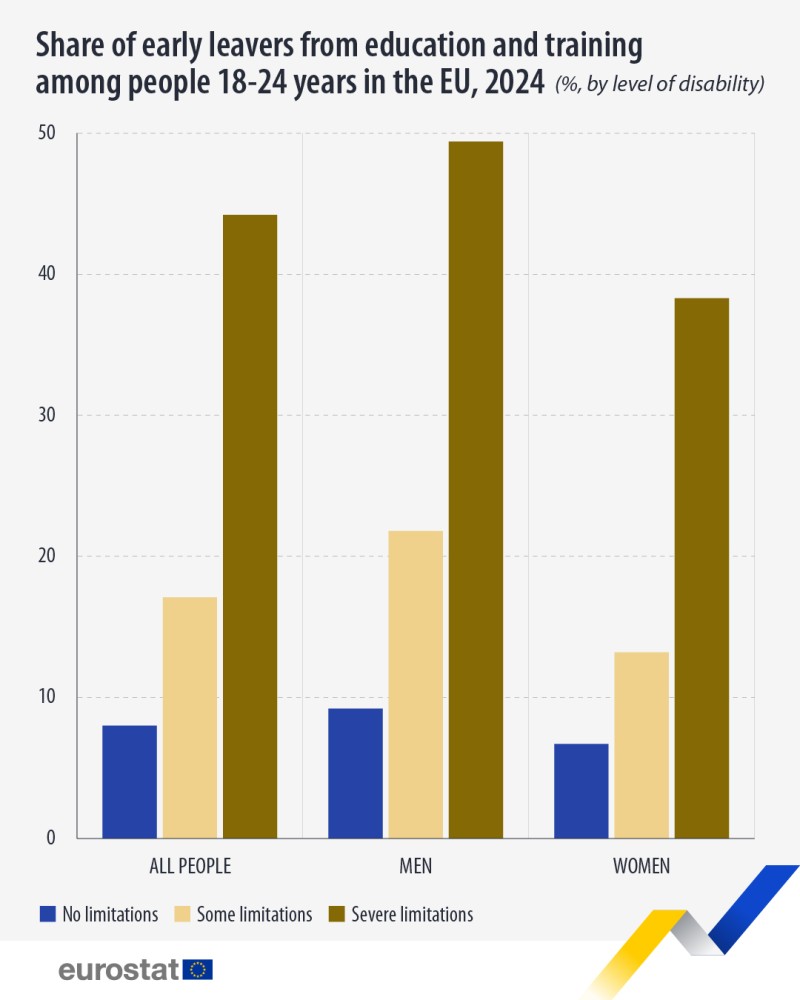⬤ New Eurostat figures show a stark divide in education outcomes for young Europeans aged 18 to 24. In 2024, 44.2% of young people with severe disabilities left education early, compared to 17.1% of those with some limitations and just 8.0% of those without disabilities. The pattern holds steady across all groups—whether you're looking at the overall population, men specifically, or women.

⬤ The numbers point to serious long-term risks. High dropout rates among people with disabilities mean fewer job opportunities down the road, greater reliance on social support systems, and lasting barriers to economic participation. Without better educational support tailored to vulnerable groups, these inequalities are likely to widen—creating broader social and economic problems across the EU.
⬤ The data gets even more striking when you look closer. Young people with severe disabilities are more than five times as likely to leave education early compared to those without limitations. Gender differences are notable too: nearly 50% of men with severe disabilities drop out early versus around 38% of women—but both rates are far higher than their non-disabled peers. These gaps reveal deep structural disadvantages that affect the entire EU.
⬤ For policymakers and educators, the message is clear: inclusive education frameworks need serious strengthening. High dropout rates among people with disabilities don't just affect individuals—they impact workforce development, social mobility, and economic resilience across Europe. Closing these gaps is essential if the EU wants to ensure all young people have a real shot at completing their education and participating fully in society.
 Artem Voloskovets
Artem Voloskovets

 Artem Voloskovets
Artem Voloskovets

